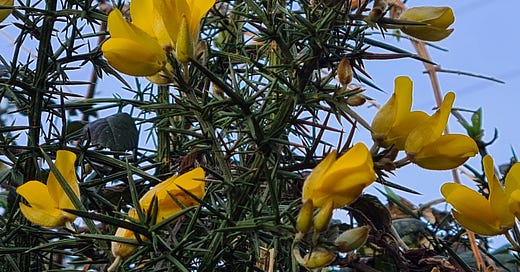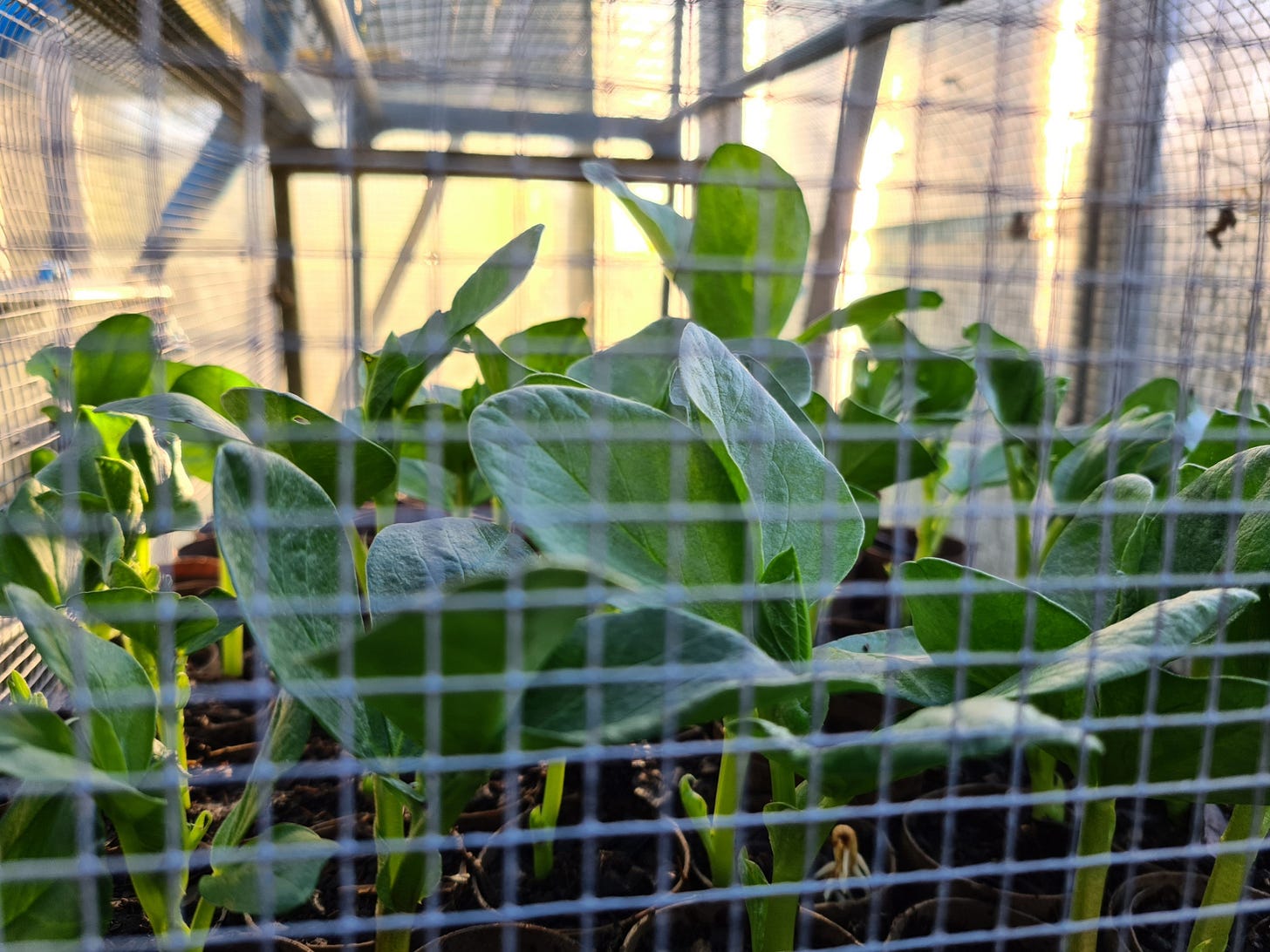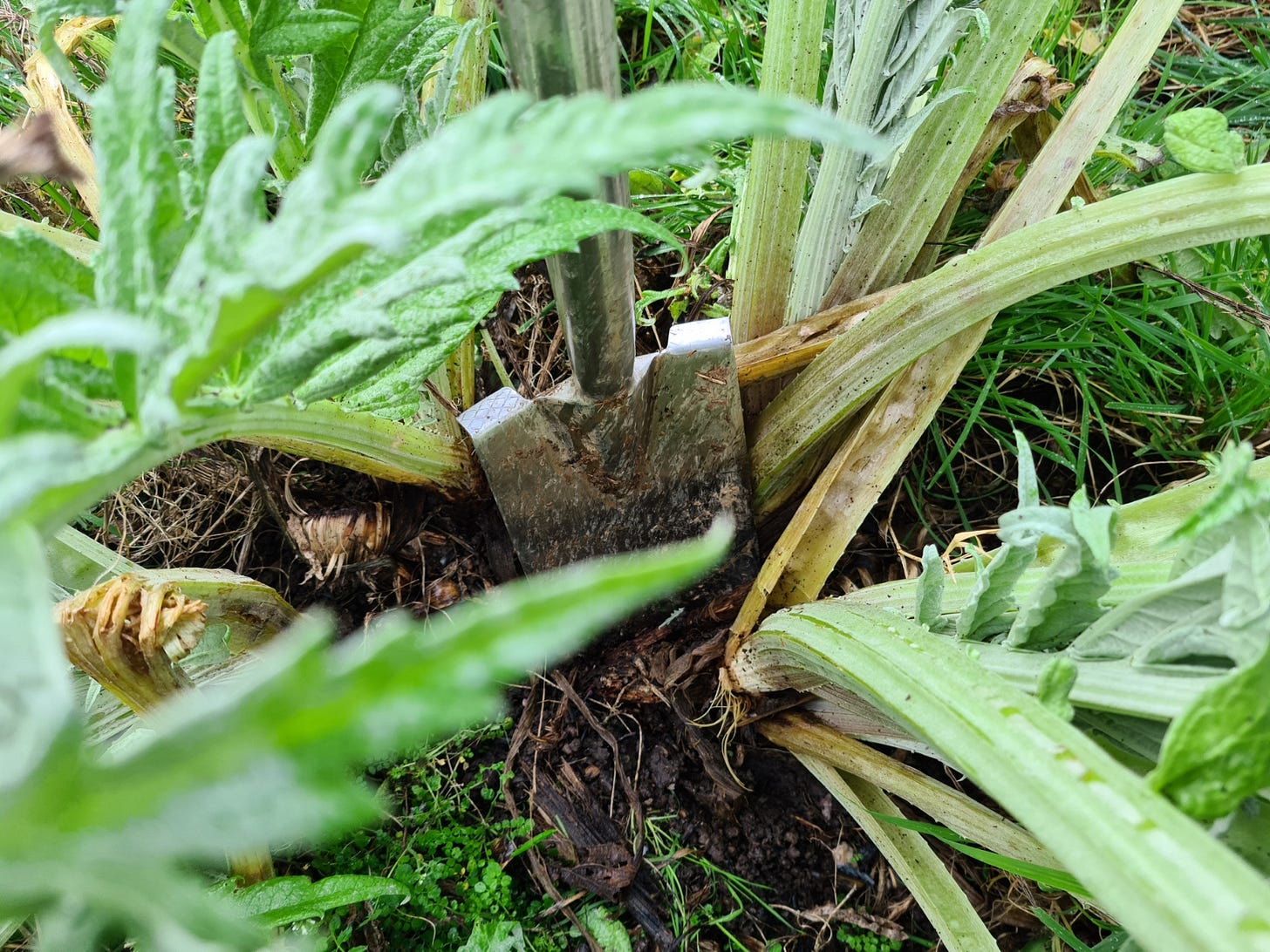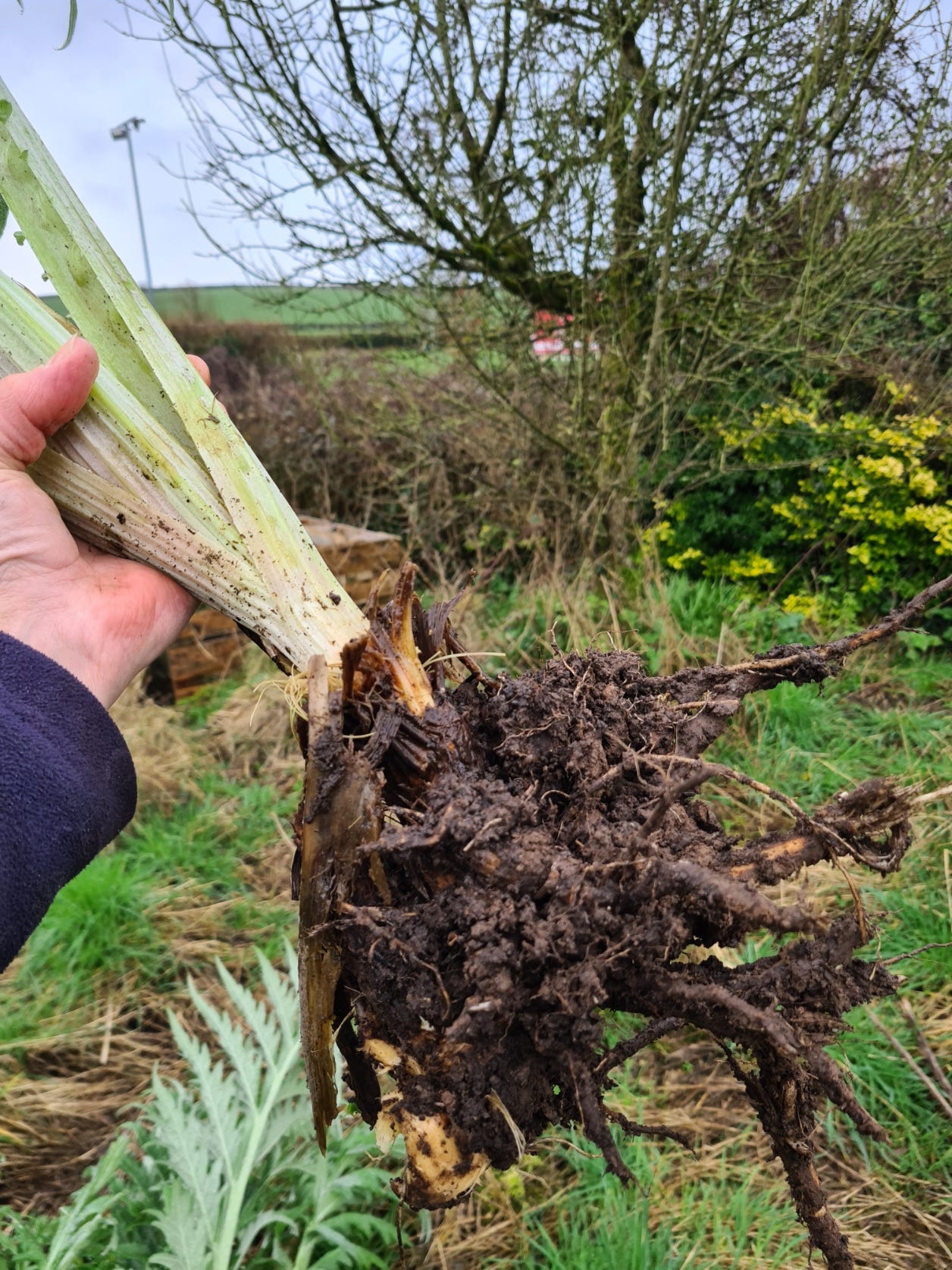Disaster!
That little chilli seedling I was waxing lyrical about last week – the first of the season – made it through another couple of days then turned grey and keeled over. It hadn’t even pulled out its leaves. As it toppled over sadly I realised quite how much I’d been relying on its little fledgling promise to bolster me through these dark, wet days: I have been crestfallen all week.
I have also been clucking about trying to find a way of making sure the same thing doesn’t happen to the other little seedlings in the batch – there are several now nudging their way through, not only the Hungarian Black chillies but also the sweet peppers and an aubergine too.
I don’t think it’s the compost – it’s home-made, and my standard mix I’ve used for years. I have been watering carefully, too, so it’s not too wet or too dry.
Thinking about it, maybe putting them on the windowsill wasn’t as clever as I thought it was. Yes, there’s a radiator there: but at night, of course, the radiator turns off, and it’s been quite chilly overnight of late – particularly in front of windows. Yo-yoing temperatures aren’t good for any plant; some can tolerate it pretty well but I suspect not chillies.
So for now I have pulled all the seed pots further into the room where the temperature might not be quite so high but is at least fairly steady. The trouble is I don’t heat my house particularly high, and not at all at night. However – the boiler itself is warm most of the time, as it keeps the water warm too, so I think I will clear off the top and see if that’s a better location.
I find the search for better sustainability is very often a journey like this. You realise something you’re doing is a bit resource-heavy: in this case, raising seeds in a heated propagator. And then you come up with an idea: my house is already heated, so why don’t I use that? And then off you go on a series of experiments, some of which work, and some of which don’t.
How sustainable you can actually be depends entirely on your particular individual circumstances. Not everyone has a central heating boiler available, for example (I wouldn’t myself if I weren’t living in a 220-year-old house which is completely unsuited to air source heat pumps). So you have to think through what other options are available to you.
If my boiler doesn’t work, my options narrow: I’ll have to weigh up the comparative emissions (roughly) between reverting back to my propagator vs buying in peat-free, organic young plants ready-grown from a nursery later in spring. I could also give up growing chillies and aubergines altogether as too high carbon to justify: though the alternative is buying them from the shops, and I think shop-bought chillies and aubergines (flown halfway round the world to us in the UK) must have a much higher carbon footprint than anything I can raise at home.
Maybe the greenest thing of all is to give up eating chillies and aubergines and eat something more seasonal, that I can grow at home instead – but I am not a fan of green hair shirts and that’s a compromise too far. I would usually rather just find the most sustainable way of doing whatever it is you want to do: nobody said it’s easy being green.
There are more successful seedlings in the garden, thank goodness. My broad beans are all coming up nicely: the ones I sowed to overwinter will be more than ready to plant outside this week as they’re now nudging the top of their mouse-proof cage. The salads I planted in the greenhouse last week have taken really well too; they’re also under mouse-proof mesh as mice are particularly hungry at this time of year and will eat newly-planted salad seedlings given half a chance too.
I am watering these very carefully, as rots take hold quickly in the damp, dark days of February when there’s not enough active growth for seedlings to pull through a bout of mildew. It’s really important to keep the leaves as dry as is possible – one of the main reasons for planting the salads in the greenhouse out of the rain. I don’t use the rose: just a thin stream of water straight from the spout onto the ground in between the seedlings, trying not to splash it as I do so.
I’ve also been dividing up my big, handsome globe artichoke plant. I am slightly astonished that it’s survived its soaking over winter: normally these are quite drought-loving plants and really don’t enjoy relentless rain. But this is quite an established plant, about five years old, and it’s on the terraced area which has been levelled using rubble beneath the topsoil so maybe the drainage has been kind to it too.
Dividing artichokes is one of the easier propagating jobs. Artichokes stay obligingly leafy right through winter, so you don’t have to work out where it is or which end is up and which is down. All you have to do is look into the heart of that handsome grey-green clump of jagged foliage and you’ll find that around the thickest main clump there are several more, smaller clumps, each with its rosette of foliage.
Insert a sharp spade carefully in between the main clump and the best of these sideshoots and slice down firmly into the ground, chopping away the smaller clump from its parent. Dig it up and you’ll find it has a fine clump of roots attached: all you then need to do is pot this up into gritty compost (I mixed a third garden soil into two thirds peat-free potting mix and added half a spadeful of sand for good measure). Trim back the tall upper foliage by about half to leave a neat crown, and keep watered but make sure it doesn’t get waterlogged. Once it starts producing new foliage from the crown you’ll know it’s settling in well; plant it out once the weather is starting to warm, around April.
The webinar I did with Alys Fowler for Plantlife last week went amazingly well and we had some really good feedback from the audience – several hundred strong by the time we got to Wednesday evening. I hope a few of you were there and got to enjoy Alys’s inspirational talk on the magical world of peat bogs and how crucial it is that we all work hard to preserve them as intact as possible, so they hold on to the enormous store of carbon they contain instead of having it ripped from their hearts to make multipurpose compost for us gardeners.
If you take home one fact it’s this: the peat in a typical bag of peat-based compost sold today will be at least 500 years old, and could be 1000 years old or more. So to use peat-based compost you’re using the carbon laid down at a time when your great-great-great-great grandparents were alive. Makes you think, doesn’t it.
This week I’ll try to bring you my long-promised list of greener garden plant suppliers so you’ll have it before February is out ready for spring proper. I do hope the weather lets up for you long enough to get outside: I am listening to torrential rain again outside as I type, but there are dry days forecast so all is not, entirely, lost. Happy gardening, I hope!








I feel your pain in losing seedlings. It happens to all of us but still feels so devistating. When they sprout it seems amazing and nothing can stop them so it is a shock when they succumb. I admit that I use a small heated propagator, but only for chillies/peppers but only until they sprout. Then I leave a cover (vented) over the top in my sunroom to keep in some warmth. The room is heated but stays coolish (but not generally cold). So I am very lucky to have this space and fingers are crossed that they survive all the things that can befall them.
I think it is a personal matter of weighing up costs (in all senses)- money, time, travel, and environmental cost - for you or the grower. I use a lot of chillies and peppers which are quite expensive to purchase. So I grow a year's supply organically and feel the few pence a day that I have the warmth on for 5-7 days (only nights) seems worth it. So it is a choice to be made, like everything in life; weighing up and considering.
But I must say your artichoke looks grand! I love growing these but admit I don't eat them- I leave them for us - and the bees and other insects- to enjoy.